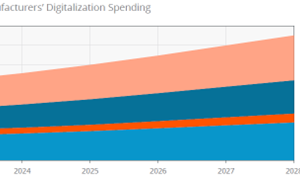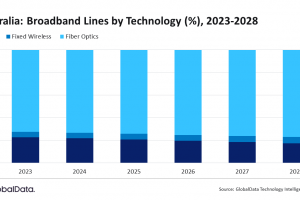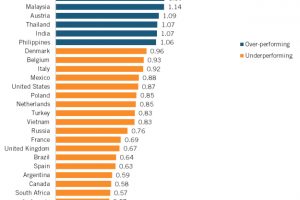By Umair Haque
It was hailed as the greatest product since the iPod … the wheel … the car. Instead, it turned out to be more like New Coke or the Segway. So what went wrong with Google Glass?
It’s not that Google Glass looked absurd — people wear silly fashions every day. It’s not that it was overpriced — people collect luxury watches and handbags every day, too. Google Glass’s failure was a story of a visionary product utterly failing to be cool.
Cool is not trivial. As Apple, Warby Parker, Net a Porter, and Shinola all know: Cool is perhaps the crucial factor in the success of new products. Cool isn’t something that is easily calculated by data-driven corporobots or profit-maximizing algorithms. Cool is not an equation. It’s mysterious, ineffable. An art, not a science. Which makes it hard for an engineering behemoth like Google to master. Cool cannot be engineered.
And yet that’s precisely what Google tried to do. It put Google Glass on models during Fashion Week, in advertorials in fashion magazines, in the hands of fashion “influencers.” Why? To engineer hype, excitement, adulation … to manufacture “buzz.” Aha! Textbook digital strategy! Genius! How could it fail?!
Actually: how could it succeed? All of that desperate maneuvering served to reinforce the obvious: that Google Glass was so uncool, the only thing Google could do was try to force it to be cool. It’s like the sad guy at the bar who shows up one day in a Ferrari and a shiny $3,000 suit … all of which only makes him less attractive. In short, Google made a fatal error of post-modern marketing: it attempted to buy cool through the not-so-subtle techniques of influence, persuasion, and manufactured buzz. But if you have to buy cool, it’s probably a reliable signal that you’re totally, hopelessly uncool. Every organization, or leader, in history that has tried to buy their way to cool has learned the hard way: cool has to be earned.
So how does one earn cool? At its most fundamental, cool is about liberation. Jazz liberates music from the suffocating formalism of classicism. Disco liberates people to stop standing around and looking awkwardly at one another and get down until the sun comes up. Great books are cool – and often banned – because they liberate people from established ideas and norms. Biker jackets are cool, not because they represent two-wheeled transport, but because they represent freedom from the tedium of spreadsheets and minivans (which in turn are just representations of other things). Things stop being cool once they stop liberating; think of a revelatory Jimi Hendrix guitar solo juxtaposed with any run-of-the-mill shred-fest by some ’80s hair band. It’s so important, I’ll say it again: Cool liberates. What, exactly, did Google Glass liberate people to do – spend more time on Facebook?
Back up for a moment. What makes rock stars so enviable? It isn’t just the money, fame, and hangers-on. Even bankers have those (and no one wants to be a banker … not even bankers). Nope. What makes rock stars so enviable, and what we really mean when we describe someone as a “rock star,” is that they don’t give a damn — about the drudgery of bosses, bills, backbiting, invoices, accounts receivable, performance reports, deadlines, conference call and all the hellish paraphernalia of a prosperous post-modern life. (I’m willing to bet that the Ramones didn’t give a damn about conference calls.) In short, rock stars are freer than the rest of us, in a fundamental way: they’re free to pursue their their passion and not to waste their lives on what doesn’t matter. They’re free to be individuals.
But Google Glass did not liberate people. It didn’t make them freer. It didn’t help them become individuals. Why did people roll their eyes at (or even punch) people wearing Google Glass? Not just because it looked ridiculous. Because it promised to be just another way to rob people of their individuality. It threatened them with yet another demand for mind-numbing conformity. Better not speak out! Better not express yourself! Maybe the Glasshole’s recording you!
Patching into another three hours of meetings in your self-driving car on your augmented reality headset so you can spend even more time getting yelled at by your boss? That’s not freedom. That’s repression. Self-chosen. Which, of course, is the most pernicious kind.
There’s a now-old joke: Google Glass lets you step outside … to check the weather. But that joke contains a profound truth. Google Glass simply reinforced the status quo.
The painful truth is that there wasn’t enough rebellion in Google Glass. Google might have thought there was. But me, you, and probably even the guy in the $3,000 suit at the bar knew: it wasn’t revolutionary, socially, economically, culturally revolutionary … it was just more of the same suffocating, shoulder-shrugging, yawn-inducing conformity. And nothing conformist is ever, ever cool.
Let me put it this way. The average American has a veritable gadget cornucopia at his fingertips. But he’s poorer, more unhappy, more anxious, and less mobile than he was 30 short years ago. In short, technology hasn’t liberated people. It might just be thwarting them, in significant ways, from the lives they should be living.
And that’s why we love things that are cool. Because they give us a tiny taste of liberation. A small caress of freedom. A little jab of individuality. All that’s always in stuff that’s cool. That’s why it doesn’t just titillate and amuse us … but thrills, excites, and exhilarates us. What is truly cool challenges us. To imagine the world as it should be. And then make our lives the levers of those worlds.
Here’s the lesson: If you want to make something cool, you’re going to have to make people the rock stars of their own lives.
This post was first published in HBR.




